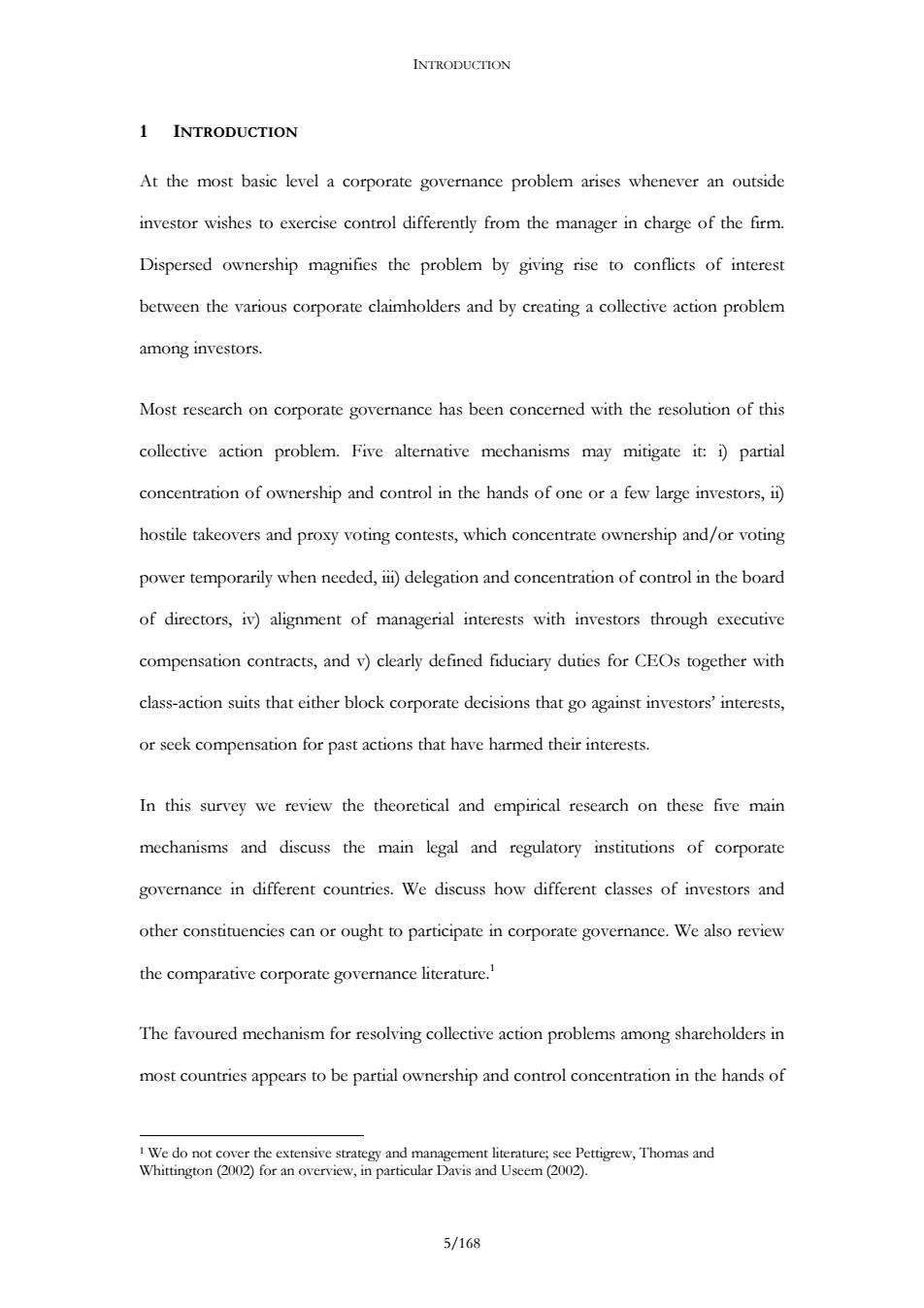正在加载图片...

INTRODUCTION 1 INTRODUCTION At the most basic level a corporate governance problem arises whenever an outside investor wishes to exercise control differently from the manager in charge of the firm. Dispersed ownership magnifies the problem by giving rise to conflicts of interest between the various corporate claimholders and by creating a collective action problem among investors. Most research on corporate governance has been concerned with the resolution of this collective action problem.Five alternative mechanisms may mitigate it:i)partial concentration of ownership and control in the hands of one or a few large investors,ii) hostile takeovers and proxy voting contests,which concentrate ownership and/or voting power temporarily when needed,ii)delegation and concentration of control in the board of directors,iv)alignment of managerial interests with investors through executive compensation contracts,and v)clearly defined fiduciary duties for CEOs together with class-action suits that either block corporate decisions that go against investors'interests, or seek compensation for past actions that have harmed their interests. In this survey we review the theoretical and empirical research on these five main mechanisms and discuss the main legal and regulatory institutions of corporate governance in different countries.We discuss how different classes of investors and other constituencies can or ought to participate in corporate governance.We also review the comparative corporate governance literature. The favoured mechanism for resolving collective action problems among shareholders in most countries appears to be partial ownership and control concentration in the hands of 1 We do not cover the extensive strategy and management literature;see Pettigrew,Thomas and Whittington (2002)for an overview,in particular Davis and Useem(2002). 5/168INTRODUCTION 1 INTRODUCTION At the most basic level a corporate governance problem arises whenever an outside investor wishes to exercise control differently from the manager in charge of the firm. Dispersed ownership magnifies the problem by giving rise to conflicts of interest between the various corporate claimholders and by creating a collective action problem among investors. Most research on corporate governance has been concerned with the resolution of this collective action problem. Five alternative mechanisms may mitigate it: i) partial concentration of ownership and control in the hands of one or a few large investors, ii) hostile takeovers and proxy voting contests, which concentrate ownership and/or voting power temporarily when needed, iii) delegation and concentration of control in the board of directors, iv) alignment of managerial interests with investors through executive compensation contracts, and v) clearly defined fiduciary duties for CEOs together with class-action suits that either block corporate decisions that go against investors’ interests, or seek compensation for past actions that have harmed their interests. In this survey we review the theoretical and empirical research on these five main mechanisms and discuss the main legal and regulatory institutions of corporate governance in different countries. We discuss how different classes of investors and other constituencies can or ought to participate in corporate governance. We also review the comparative corporate governance literature.1 The favoured mechanism for resolving collective action problems among shareholders in most countries appears to be partial ownership and control concentration in the hands of 1 We do not cover the extensive strategy and management literature; see Pettigrew, Thomas and Whittington (2002) for an overview, in particular Davis and Useem (2002). 5/168